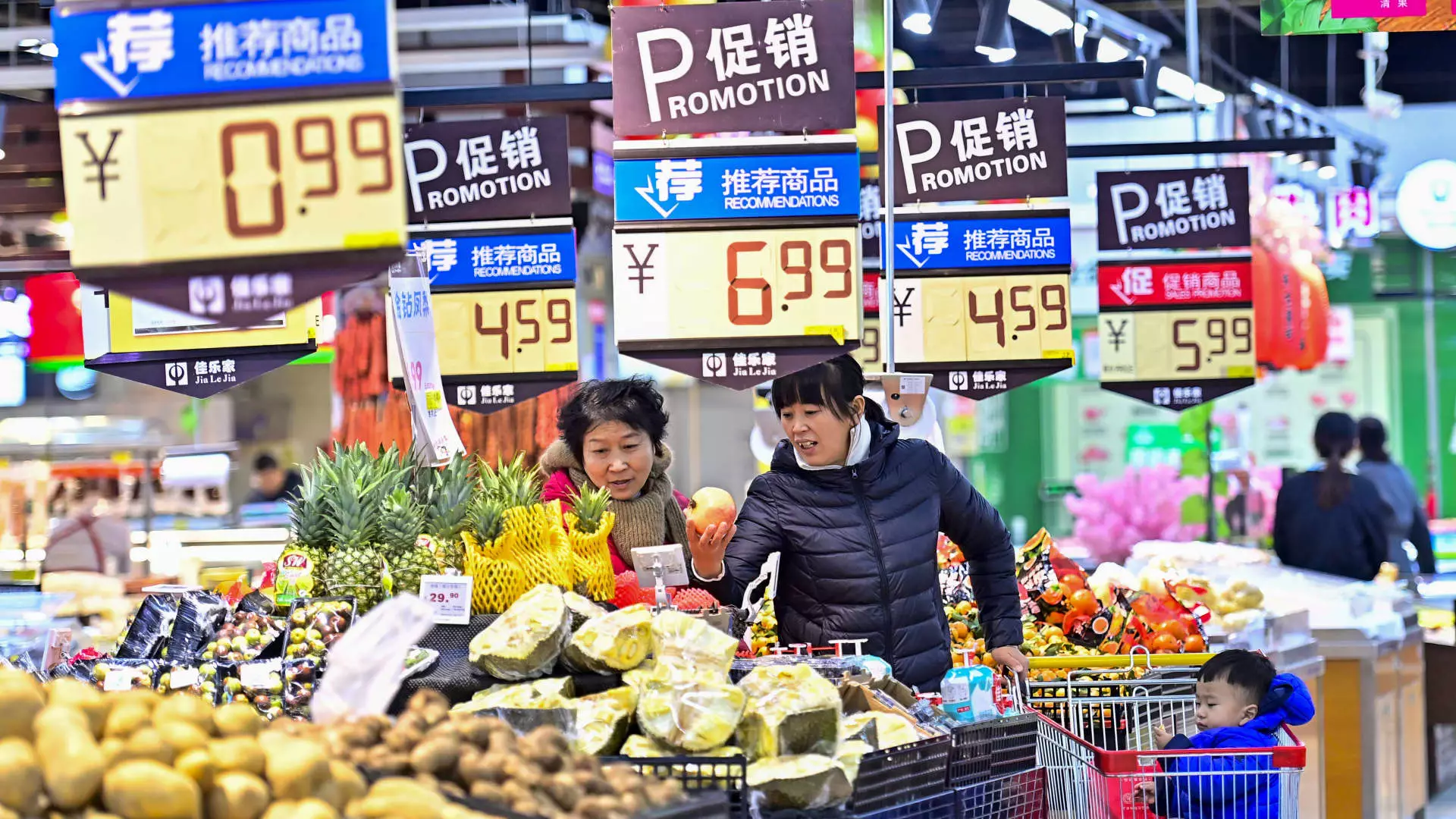In a revealing report from the National Bureau of Statistics, December marked a troubling moment for China’s economy as consumer price inflation dwindled to just 0.1% year-on-year. This slight uptick in inflation was aligned with the forecasts from Reuters, yet it represented a decline from the previous month’s increase of 0.2%. Meanwhile, the Core Consumer Price Index (CPI), which excludes volatile food and energy costs, showed a modest rise of 0.4%, a slight increase from November’s reading of 0.3%. The flat growth in the consumer price index month-on-month suggests a stagnation in economic vitality, as it mirrors a marked decrease from the preceding month where a 0.6% decline was noted.
Interestingly, the dissection of food prices revealed a 0.6% drop month-on-month, a trend attributed to favorable weather conditions influencing the agricultural sector. Key components of the CPI, particularly fresh vegetables and fruits, dropped by 2.4% and 1%, respectively. Pork prices, a major piece of the consumer price mosaic in China, decreased by 2.1% month-on-month, presenting further challenges given that pork and fresh vegetables still exhibited robust year-on-year inflation rates of 12.5%. This persistent fluctuation in food prices presents a multifaceted dilemma for policymakers, as it directly affects consumer sentiment and purchasing behavior.
Diving deeper into the economic indicators, it is crucial to consider the trend in wholesale prices. The Producer Price Index (PPI) fell for the 27th consecutive month, showing a year-on-year decrease of 2.3% in December, which was marginally better than the 2.4% decline projected by analysts. The monthly PPI illustrated a minor dip of 0.1%, correlating with a stalled demand seen due to seasonal factors affecting infrastructure and real estate projects. This ongoing decline in producer prices hints at a wider trend of deflationary pressures that could stifle recovery in other sectors of the economy.
The persistent near-zero consumer inflation is particularly troubling, reflecting weak domestic demand. Despite a suite of stimulus measures rolled out by the Chinese government, the anticipated rise in consumption has yet to materialize. These measures have included interest rate cuts and increased lending, seemingly failing to catalyze a rebound in consumer spending.
In an effort to invigorate consumer spending, initiatives such as a consumer trade-in scheme have been launched, targeting sectors like electronics and appliances with immediate subsidies. However, economists like Louise Loo assert that these supports function as mere temporary solutions rather than offering a substantial shift in consumer behavior. The concern is that such fixes could inadvertently lead to a significant drop in future spending as consumers might tighten their belts after initial expenditures.
Moreover, as the Chinese New Year approaches, there is a palpable tension among consumers, who are anticipating discounts amid current market conditions. The culture of seeking deals for holiday shopping may indicate a reluctance to spend without perceived value—a behavior that reinforces deflationary trends.
Despite the prevailing challenges, glimmers of hope exist within the manufacturing sector. Factory activity in China has exhibited growth over the past three months, although the rate of this expansion slowed in December, hinting at potential recovery paths ahead. Moreover, experts like Carlos Casanova from Union Bancaire Privée note that while there are signs of recovery following policy shifts in September, deep-rooted challenges—including property market difficulties and international trade friction—require careful navigation.
With the onshore yuan reaching a 16-month low against the dollar, the interplay of global economic factors adds another layer of complexity. As fiscal and monetary strategies unfold, the combination of consumer sentiment and external pressures will play a critical role in shaping China’s economic future, particularly as the nation grapples with the consequences of deflation and stagnant growth. Moving forward, stakeholders must vigilantly analyze the implications of these economic indicators to carve a viable path for recovery in consumer confidence and spending.


Leave a Reply